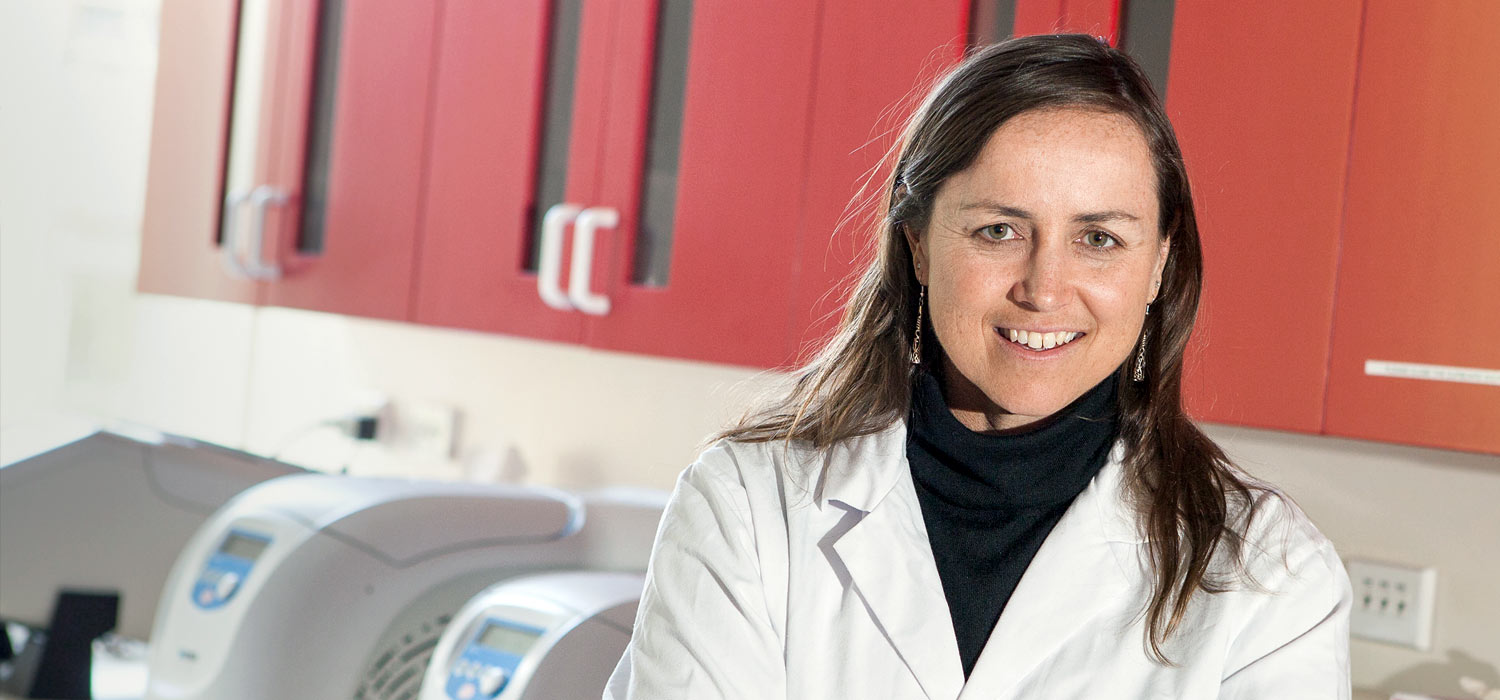
Hormone test wins grant
A new simple-to-use test for measuring oestrogenic molecules in women's' blood offers significant potential to monitor existing breast cancer patients and as a screening tool to help save more lives.
The widespread presence of chemicals that mimic oestrogens, the primary female sex hormones, has far-reaching consequences for fertility, health and cancer management.
Recognising this significance, a new test devised by Professor Alison Heather and her team from Otago's Department of Physiology to measure oestrogens – and their oestrogen-like imposters – won the 2016 Translational Research Grant.
The $50,000 award will help the researchers commercialise their technology and fund critical work leading to patents and scientific papers. Otago Innovation Ltd will provide intellectual property management and business advice to ensure the needs of potential investors or licensees are met.
The new hormone test leverages cell-based assays already developed by Heather. However, as these tests are too cumbersome and expensive for use outside the laboratory or for high-volume applications, Heather and her team have dissected and extracted the key molecular machinery from inside cells to develop a new portable, inexpensive and simple-to-use test to show the presence of molecules that activate the oestrogen hormone response.
Their first test is for the management of breast cancer, which will be evaluated in collaboration with clinical oncologists at Dunedin Public Hospital.
Breast cancer is a major cause of death for New Zealand women, many of whom relapse after their initial treatment.
“Oestrogens have profound effects on the development, progression and recurrence of this disease and current therapies block oestrogen production to prevent new tumour growth,” says Heather. “But, sadly, being 'disease-free' does not stop recurring disease in some cases.”
This occurs when “oestrogen imposters” – or oestrogenic molecules – mimic the structure of oestrogen, activating molecular signalling cascades in cells and driving new tumour growth.
“Having a quick and reliable test for oestrogenic molecules will provide an early warning for potential relapse,” she says.
The oestrogenic molecules include naturally-occurring plant-derived phytoestrogens, fungi-derived mycoestrogens and a range of synthetic compounds that are found in many consumer products. Many of these compounds can accumulate naturally.
“The first product will be a medical device used by clinical practitioners to monitor oestrogenic levels in the blood of patients,” says Heather. “Clinical trials have shown that oestrogenic activity is elevated two years prior to breast cancer diagnosis and so could be used to identify high-risk people. For example, it may be useful to monitor women at high risk of primary breast cancer due to a family history of the disease.”
If the oestrogenic bioassay proves its worth not only as a monitor for recurring disease, but also a screening tool for new disease, it could add significantly to the screening techniques currently used, saving more lives.
The Translational Research Grant is an annual competition offered by the Division of Health Sciences with the primary goal of assisting researchers in the pursuit of research that translates into societal benefits. A written application is followed by a Dragons' Den-style pitch to a panel of experts.
Story: Stephen SowerbyPhoto: Sharron Bennett
